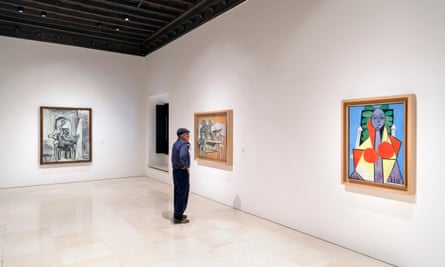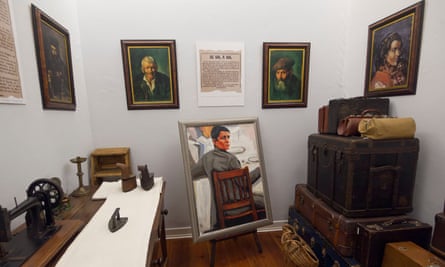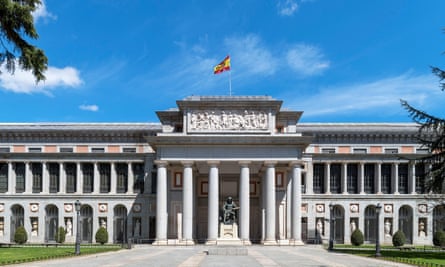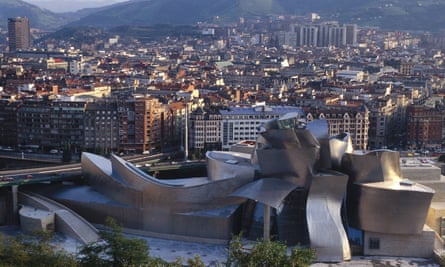Pablo Picasso sits on a bench in Málaga’s Plaza de la Merced. Staring ahead, notebook in hand, elderly and made of bronze, he is as much a part of the city as the sea. It’s a wistful work. Picasso spent almost all his adult life – and died – in France, but no 20th-century artist is more Spanish than Picasso, with his bull motif, machismo, defining image of the civil war and fondness for Málaga wine.
“Living abroad,” he said, “one becomes even more Spanish.”
To mark the 50th anniversary of his death (on 8 April 1973), exhibitions are being held around the world throughout 2023. Spain is the country with the most, and a selection can be combined with a wander through the Spanish destinations that inspired him for a multiperspective, and therefore rather cubist, portrait of the maestro.
Málaga

Born in Málaga in 1881, Picasso spent 10 years living in one then another of the tall, green-shuttered houses flanking Plaza de la Merced, now with street-level bars and tables and umbrellas out front. The Museo Casa Natal in his first home contains books, furniture, and works by his art professor father, José Ruiz y Blasco. A stroll through the city, taking in the light, street life and doves, provides more insight into ways his birthplace shaped his vision, and it’s easy to picture him sketching outside a cafe on Plaza de la Constitución as he did on later visits.
Between Plaza de la Merced and the cathedral, the Museo Picasso Málaga has a permanent collection that spans his Blue and Rose periods, surrealism and cubism – including paintings, sculptures, illustrations and ceramics – and is unbeatable for an overview.
Among the temporary exhibitions, Picasso as seen by Otero (until 23 April), which has notes from conversations and fly-on-the-wall photos of the artist at work and play, is a real snoopy treat.
La Coruña

When the family moved to the north-western tip of Spain, Picasso complained that it never stopped raining, there weren’t any bulls and he missed Málaga, but later acknowledged that La Coruña – full (until the civil war) of artists and intellectuals – “awoke his senses”. He studied at the School of Fine Arts where his father was teaching (Picasso’s school reports are displayed in the foyer), and held his first exhibition at Rúa Real, 20 – then a furniture shop, now selling shoes. A review in the local paper confidently predicted he had a bright future.
About 100 pieces from – or influenced by – this Galician period have been loaned for an exhibition at Museo de Belas Artes da Coruña, until 25 June. A self-guided Picasso route (available from the tourist office) takes in Orzán beach and the Tower of Hercules for views that inspired the works (reproductions) on display alongside his father’s at the small but illuminating Picasso House Museum.
Barcelona

Picasso arrived in Barcelona as an impressionable teenager in 1895 and moved to Paris full-time in 1904. El Raval’s shady streets, drunks, beggars and emaciated sick appeared on his Blue period canvases, while the bohemians, politics, absinthe and modernisme he found in the bars from the age of 17 had a similarly catalytic effect.
It’s said he (and Dalí and Hemingway) drank at the London Bar, though it opened after he left; and at Bar Marsella, which can’t have changed too much. El Raval is neither as wretched nor as stimulating as it once was.
Across La Rambla in the Gothic Quarter, Carrer d’Avinyó, the street of brothels that inspired Les Demoiselles d’Avignon, is full of shops: the site of his first studio is a boutique hotel (Serras), and a nerve centre for arty intellectuals; Els 4Gats is a well-restored upmarket bar and restaurant.
Occasionally stops on self-guided Picasso routes produce a frisson. For those who know Picasso’s The Passeig de Colom, painted from the balcony of Hotel Ranzini while staying there with future wife, the ballet dancer Olga Khokhlova, a pause outside number 22 is haunting, even if – perhaps because – the view is mainly of the road, and the hotel is now a courier company office.
The painting can be seen – along with 4,250 others – at the Picasso Museum, which occupies five gothic palaces. This is the most comprehensive collection of art from his formative years, so good shoes are advised.
Horta de Sant Joan
According to Picasso, he learned all he knew in this village midway between Barcelona and Valencia. A first trip spawned traditional landscapes of farmhouses and fields, and pictures of donkeys. A decade later, visiting from Paris (with a lover who caused a stir by sharing his bed and playing dominos in the bars like a man), he captured and immortalised Horta in early cubist greats. The Picasso Centre has reproductions and interesting paraphernalia from both trips. Picasso travelled by train to Tortosa, walking the last 40km with his luggage on a mule; by more conventional car, it’s two and a half hours from either city.
after newsletter promotion
Madrid

At 16, Picasso spent a year at Madrid’s august Real Academia de Bellas Artes de San Fernando. Superb for Goyas and its cool marble in summer, the academy will be showing the world’s most important private collection of Picassos: the Nahmad collection, until 2 July.
Picasso skipped most classes, preferring to copy the works of old masters over at the Prado Museum. The Prado’s Picasso – El Greco (13 June–17 September) presumably touches on the merits of that.
Elsewhere on the Paseo del Prado, the Thyssen-Bornemisza Museum has Picasso: the Sacred and Profane (4 October-14 January 2024), and the Reina Sofía gallery, Picasso 1906: The Great Transformation (14 November-4 March 2024), plus the almighty Guernica on permanent display.
Picasso stayed in a pensión in Lavapiés during his time here, and the building (Calle de San Pedro Mártir, 5, near the top of El Rastro) is an eyecatcher with ceramic murals featuring Picasso young and old, and a few of his works.
If walking there from Reina Sofía, pause at La Casa Encendida to catch work inspired by the artist’s final decade in Picasso: Untitled (19 May-7 January 2024 – it’s a bonus offering in an inspiring space with year-round shows, concerts and courses, and an excellent cafeteria run by Pum Pum Café.
Guernica and Bilbao

The Guggenheim Bilbao is an appropriately muscular sculptural venue for Picasso Sculptor: Matter and Body, which transfers after five months in Málaga (29 September-14 January 2024). And, 30km east and accessible by train, there’s Guernica. While of huge cultural importance to the Basques, Guernica is better known globally as a painting not a town, and visiting can be anti-climactic. The masterpiece, produced in response to the April 1937 aerial bombardment by German and Italian forces in support of Franco – which left 2,500 dead or wounded, and flattened almost everything but the Assembly Hall – is a visceral depiction of agony. The town, rebuilt, is a little dull.
However, in addition to an exceptional Monday market, Guernica does have the Peace Museum, which details the attack and a ceramic version of the other, more famous Guernica, done to scale.
Buitrago del Lozoya
Just an hour’s drive north from Madrid up the A-1, or a bus ride from Plaza de Castilla, this picturesque village with medieval castle and walls built by the Arabs, tucked in the crook of a river, boasts a uniquely personal Picasso collection. Villager Eugenio Arias met Picasso while living in France and, for the last 26 years of the artist’s life was his friend and barber. He bequeathed many of Picasso’s gifts of lithographs, ceramics, posters, sketches, books and photos to the town hall, which now houses the Museo Picasso-Colección Eugenio Arias.
Links to information on all Picasso-themed action are available at España Es Cultura
